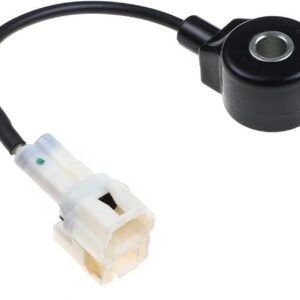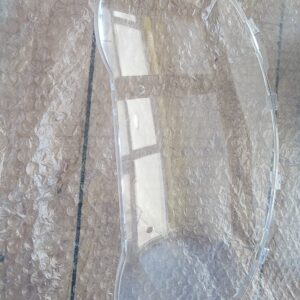Title: Uncovering the Need for Speed: The Importance of Speed Sensors in Cars
Introduction:
As you cruise down the highway, your vehicle relies on a multitude of sensors to ensure smooth operation and optimal performance. Among these essential components is the speed sensor, a small yet critical device that plays a pivotal role in monitoring vehicle speed and facilitating various safety and control systems. In this blog, we’ll take a closer look at speed sensors in cars, exploring their function, importance, and the ways they contribute to the driving experience.
What is a Speed Sensor?
A speed sensor, also known as a vehicle speed sensor (VSS) or wheel speed sensor, is a specialized sensor that detects the rotational speed of a vehicle’s wheels or transmission output shaft. Its primary function is to provide accurate speed information to the vehicle’s onboard computer or control systems.
Functionality:
But how does a speed sensor work? Depending on the type of sensor and its location, speed sensors can detect wheel speed, transmission output speed, or vehicle speed. Wheel speed sensors, for example, typically use magnetic or Hall effect technology to monitor the rotation of individual wheels. Transmission output speed sensors, on the other hand, are located within the transmission and detect the rotational speed of the output shaft.
Importance:
The importance of speed sensors in cars cannot be overstated. These small yet crucial components play a critical role in various vehicle systems, including:
1. Anti-lock Braking System (ABS): Speed sensors provide wheel speed data to the ABS system, allowing it to detect wheel lockup during braking and modulate brake pressure to prevent skidding and maintain steering control.
2. Traction Control System (TCS): Speed sensors enable the TCS to monitor wheel speed and detect wheel slip, helping to prevent wheel spin and improve traction on slippery or uneven road surfaces.
3. Electronic Stability Control (ESC): ESC systems use speed sensor data to detect and correct vehicle skidding or loss of control by applying individual brakes and adjusting engine torque.
4. Transmission Control: Speed sensors provide input to the vehicle’s transmission control module (TCM), helping to optimize shift points, improve shift quality, and prevent transmission slippage.
5. Cruise Control: Speed sensors allow the vehicle’s cruise control system to maintain a constant speed by adjusting throttle position or applying brakes as needed.
Maintenance and Replacement:
Proper maintenance of speed sensors is essential to ensure accurate speed readings and reliable operation of vehicle systems. Over time, speed sensors may become contaminated with dirt, debris, or brake dust, leading to reduced sensitivity or failure. Regular inspection, cleaning, and testing of speed sensors as part of routine maintenance can help prevent issues and ensure proper function. If problems arise, such as erratic speedometer readings or malfunctioning ABS or TCS systems, professional diagnosis and replacement of the speed sensor may be necessary to restore proper operation.
Conclusion:
In conclusion, speed sensors may be small components, but their impact on vehicle safety and performance is significant. By providing accurate speed data to various vehicle systems, speed sensors help optimize braking, traction, stability, and transmission control, enhancing the driving experience and ensuring passenger safety. So, the next time you hit the road, take comfort in knowing that your vehicle’s speed sensors are working behind the scenes to keep you safe and in control.
In stock (can be backordered)
$18,926.31
Title: Uncovering the Need for Speed: The Importance of Speed Sensors in Cars
Introduction:
As you cruise down the highway, your vehicle relies on a multitude of sensors to ensure smooth operation and optimal performance. Among these essential components is the speed sensor, a small yet critical device that plays a pivotal role in monitoring vehicle speed and facilitating various safety and control systems. In this blog, we’ll take a closer look at speed sensors in cars, exploring their function, importance, and the ways they contribute to the driving experience.
What is a Speed Sensor?
A speed sensor, also known as a vehicle speed sensor (VSS) or wheel speed sensor, is a specialized sensor that detects the rotational speed of a vehicle’s wheels or transmission output shaft. Its primary function is to provide accurate speed information to the vehicle’s onboard computer or control systems.
Functionality:
But how does a speed sensor work? Depending on the type of sensor and its location, speed sensors can detect wheel speed, transmission output speed, or vehicle speed. Wheel speed sensors, for example, typically use magnetic or Hall effect technology to monitor the rotation of individual wheels. Transmission output speed sensors, on the other hand, are located within the transmission and detect the rotational speed of the output shaft.
Importance:
The importance of speed sensors in cars cannot be overstated. These small yet crucial components play a critical role in various vehicle systems, including:
1. Anti-lock Braking System (ABS): Speed sensors provide wheel speed data to the ABS system, allowing it to detect wheel lockup during braking and modulate brake pressure to prevent skidding and maintain steering control.
2. Traction Control System (TCS): Speed sensors enable the TCS to monitor wheel speed and detect wheel slip, helping to prevent wheel spin and improve traction on slippery or uneven road surfaces.
3. Electronic Stability Control (ESC): ESC systems use speed sensor data to detect and correct vehicle skidding or loss of control by applying individual brakes and adjusting engine torque.
4. Transmission Control: Speed sensors provide input to the vehicle’s transmission control module (TCM), helping to optimize shift points, improve shift quality, and prevent transmission slippage.
5. Cruise Control: Speed sensors allow the vehicle’s cruise control system to maintain a constant speed by adjusting throttle position or applying brakes as needed.
Maintenance and Replacement:
Proper maintenance of speed sensors is essential to ensure accurate speed readings and reliable operation of vehicle systems. Over time, speed sensors may become contaminated with dirt, debris, or brake dust, leading to reduced sensitivity or failure. Regular inspection, cleaning, and testing of speed sensors as part of routine maintenance can help prevent issues and ensure proper function. If problems arise, such as erratic speedometer readings or malfunctioning ABS or TCS systems, professional diagnosis and replacement of the speed sensor may be necessary to restore proper operation.
Conclusion:
In conclusion, speed sensors may be small components, but their impact on vehicle safety and performance is significant. By providing accurate speed data to various vehicle systems, speed sensors help optimize braking, traction, stability, and transmission control, enhancing the driving experience and ensuring passenger safety. So, the next time you hit the road, take comfort in knowing that your vehicle’s speed sensors are working behind the scenes to keep you safe and in control.
| Warehouse | Inventory at warehouse 2 |
|---|




Get E-mail updates about our latest products and special offers.
Sensors and More is Jamaica’s ultimate online auto parts store. Established in 2020, we specialize in genuine electrical parts for Japanese, Read more…
Reviews
There are no reviews yet.